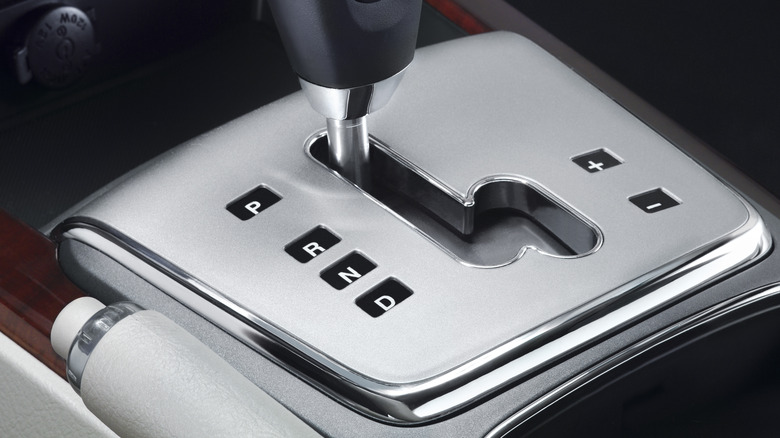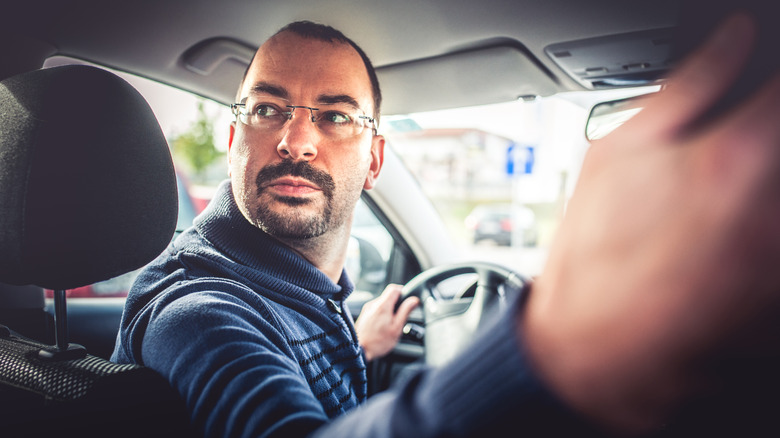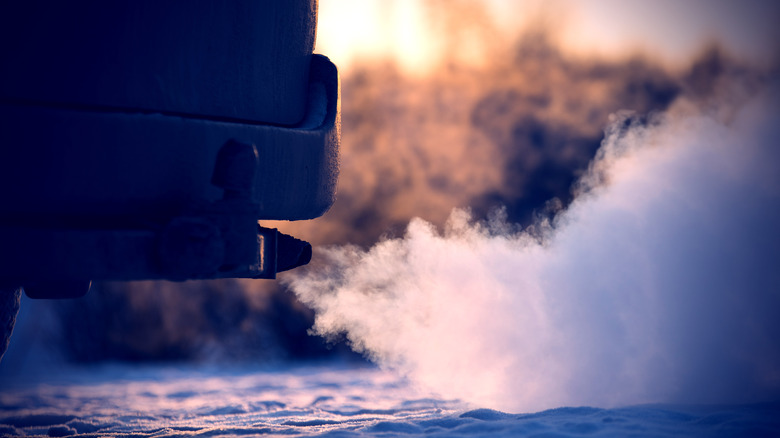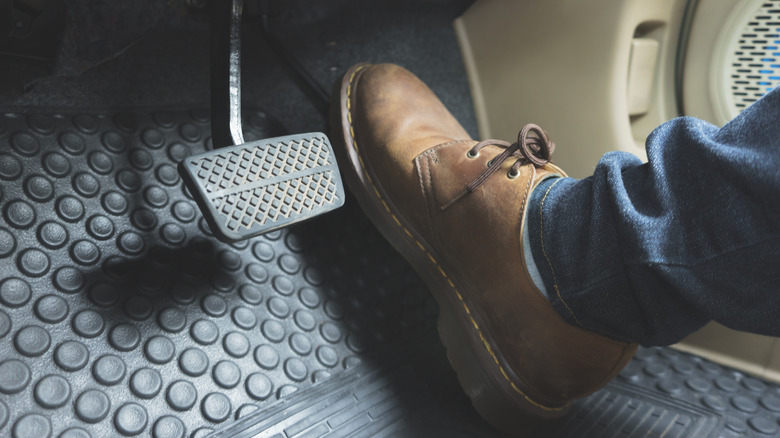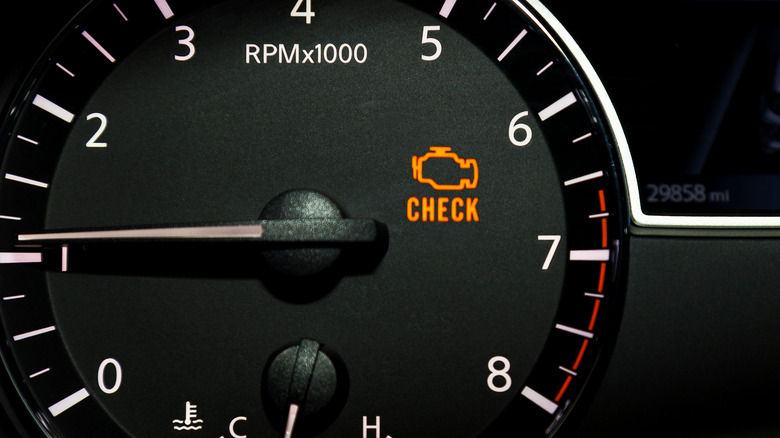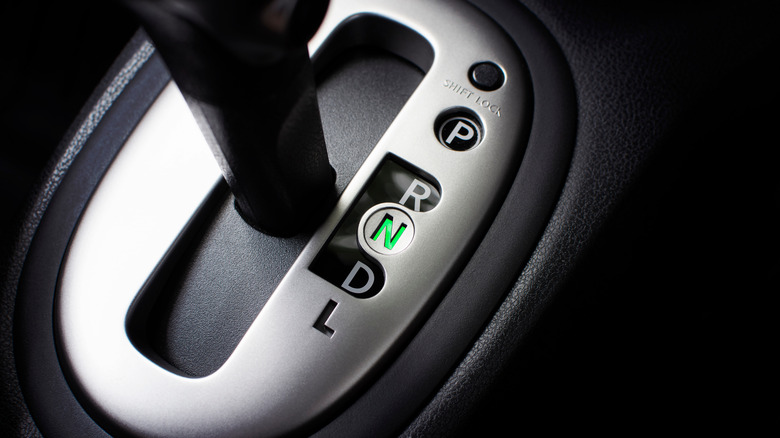5 Things You Need To Stop Doing If Your Car Has An Automatic Transmission
Automatic transmissions have been the dominating automotive format for decades now. While manual transmissions are cool, the simple fact of the matter is that shifting an automatic into drive and forgetting about it for the duration of your trip is a much easier, lower-stress way to travel which is why stick shifts are a dying breed. That being said, just because an automatic transmission takes a lot less guesswork to use than a manual transmission, that doesn't mean that you can disregard its intricacies entirely.
Automatic transmissions are built in a very particular way to easily facilitate travel without the need for transmission minutiae. If you try to use them in the same way you'd use a manual transmission, or otherwise try to circumvent their operation with little "tricks," you'll end up doing a lot more harm than good. Certain bad habits can wear out the transmission's components, making it harder to use, and in the worst-case scenario, breaking it entirely and necessitating a mechanic visit.
Shifting between drive, reverse and park in motion
Generally, the only times you ever shift an automatic transmission are when you're driving, reversing, or parking. Since these three states of being are more or less antithetical to each other, you should, in theory, never have any reason to switch between drive, reverse, and park unless you're already at a complete stop. However, if you're in a rush or just feel gutsy, you may try to shift while you're still in motion, such as dashing into a parking spot and slamming into park or cruising downhill in neutral. But you could be hurting your car without realizing it.
Besides just being generally unsafe, doing this is absolute murder on your transmission. Automatic transmissions — just like their manual counterparts –aren't designed to shift like this, so forcing a change while you're in motion is kind of like trying to pound a square peg into a circular hole. It might go through, but the damage it causes is obvious.
Staying in drive while parked
Whenever your car is at rest outside of an active traffic zone, such as a parking space or a driveway, you're supposed to put the shifter in park and take your feet off the pedals. This is the best thing to do both for your transmission and your own comfort, especially if you're going to be hanging around for a while. If you're planning on making some kind of quick escape from your parking spot, though, such as when you're picking up a friend, you might just stay in park and keep your foot on the brake.
If you leave the car in drive while you're parked, the engine will stay warmed up, and if you do this frequently for long periods of time, the engine may start to slowly overheat. An overheated engine is more susceptible to sudden hardware failure. So shift into park when stopped so it can take a proper rest.
Flooring it
Flooring the gas pedal on a car, also known as "launching," is one of those awful temptations you get the first time you get behind the wheel, right up there with revving the engine in park and doing donuts in a parking lot. Even putting aside the obvious hazards of going from zero to ludicrous, though, flooring your gas from a complete stop is actually quite damaging to your transmission.
The whole reason you're supposed to carefully and cautiously accelerate from a stopped position is that your transmission needs a moment to get going before it can handle higher speeds. Flooring the gas puts an immediate, intense strain on the transmission, andif it's cold out, flooring the gas will rev the engine before it has time to warm up and circulate fuel. That can damage the cold metal components. Wherever it is you need to be, you can't possibly need to be there that quickly.
Ignoring the Check Engine light
The Check Engine light is one of the more mysterious afflictions your car can manifest, often because it's so sudden and vague. Everything can seem completely normal with your car, and then out of nowhere, that little yellow light on your dashboard winks on. Because it's so vague, you may be tempted to ignore it and just hope it goes away, but as with most problems in life, that doesn't really work. Not only can that light indicate a problem with your engine, it can also signal a problem with the car's vital components, your automatic transmission included.
In regards to your transmission, the Check Engine light could indicate any number of problems, including low transmission fluid levels, overheating, gear grinding, or gear slipping. Just because it's an automatic transmission and it's handling most of the finer control aspects for you, that doesn't mean its moving parts can't get randomly messed up. When that light comes on, take it seriously and visit a mechanic as soon as possible.
Shifting to neutral while stopped
While all automatic transmissions have a neutral gear, it's somewhat vestigial. The neutral gear on an automatic is more of an emergency measure than anything else, good for slowing the car if your gas and brakes aren't responding or the car is stuck in a ditch (even better is working your way through lower gears, assuming your automatic transmission allows for that). Unlike with a manual transmission, you don't need to shift to neutral while you're stopped, as you can just stay in drive. If that's a habit you have from driving manual transmission cars, you'd do well to break it.
Switching an automatic transmission to neutral while the car is stopped, such as at a stop light, won't save you any gas. All it does is contribute to unnecessary wear & tear on the gearbox. Not only that but if you accidentally step on the gas while still in neutral, you won't accelerate properly, which can be potentially dangerous if you're in a traffic jam or a busy intersection.
